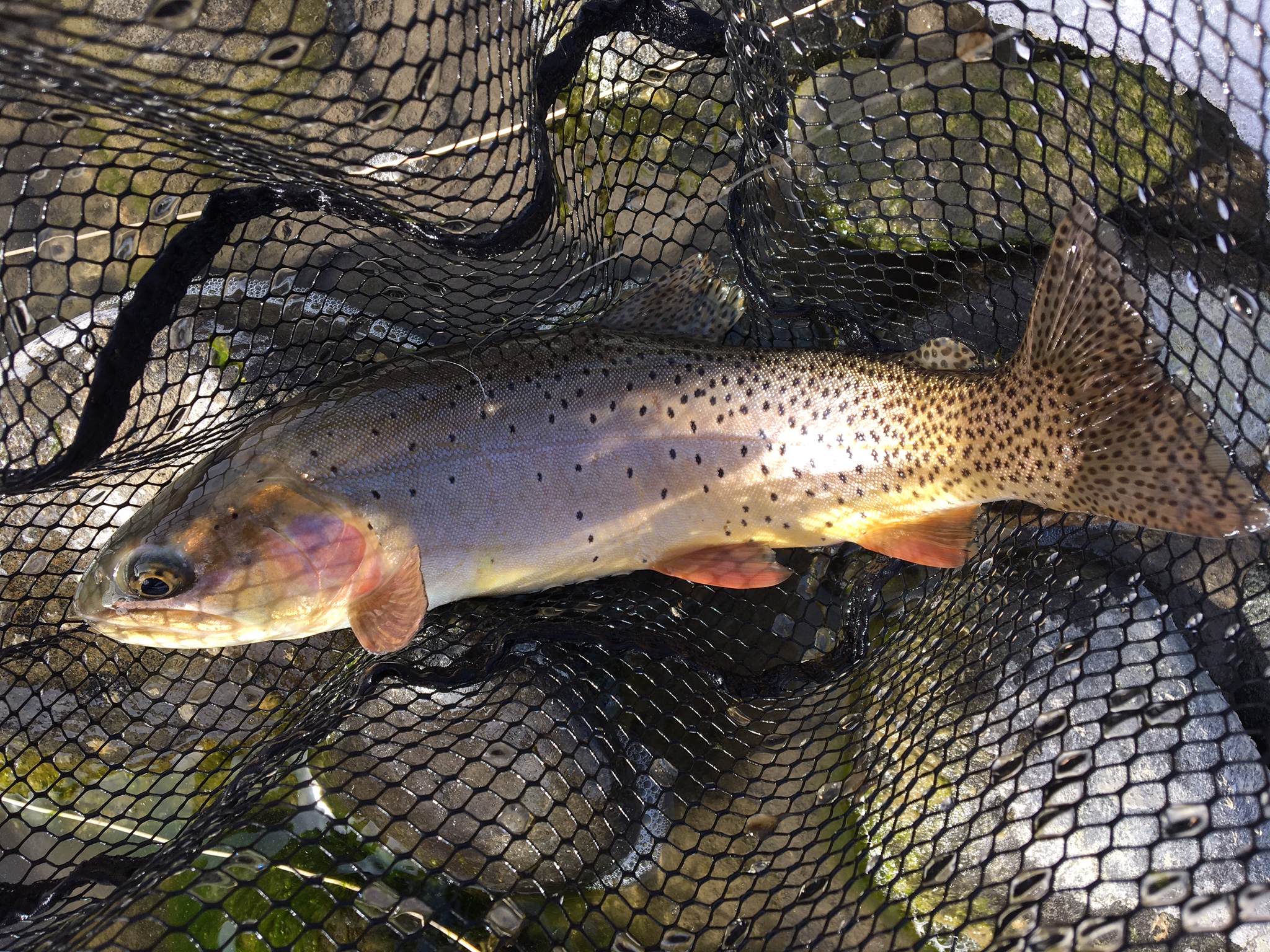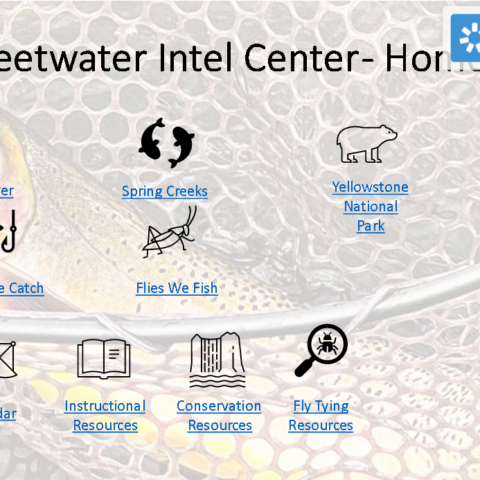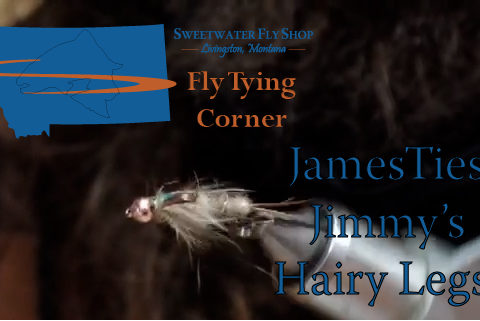
Yesterday’s fly fishing on the Yellowstone River was not easy. I should have known that things would be tough when I hooked and lost a nice fish on my first cast. After that, nothing, for a long time. After a while, a couple of whitefish, but still no trout. I switched flies, played with the depth of my nymph rig, moved to a different spot. And finally, my hard work was rewarded with a couple of decent (and gorgeous) Yellowstone Cutthroat. Still nothing to write home about, but it inspired me to put down a few words on what to do when the trout aren’t cooperating. I’ll focus here on nymphing, as that’s what most of us are up to during the winter season, but some of the same principles apply to dry flies and streamers as well.
So what should you do when cast after cast goes unrewarded? Many anglers’ first inclination is to start changing flies, and changing flies again, until they find the one fly that the fish will eat. There’s nothing wrong with trying a different fly, and sometimes you really will hit upon a pattern that works like a charm. But remember that time spent tying and re-tying flies is time when your flies are not in the water. And you won’t catch fish while you’re re-rigging. On freestones like the Yellowstone River, I’m unconvinced that exact fly selection is typically the cause of slow luck, particularly when there’s not a significant hatch going on or about to start. Freestone fish are opportunistic feeders, and will rarely key in on a particular bug. Yes, you want your flies to be representing, if not outright imitating, something that the fish are likely to be seeing at the moment. And switching flies can also positively affect your confidence, causing you to cast more precisely and focus more intently. So yes, go ahead and change your flies. Change colors. Go from something flashy to something more subdued, or vice versa. But don’t expect to find the “magic bullet,” and give each new rig time to do its thing.
So if changing flies is not necessarily the answer, what is? Well, the first thing I’d play with is the depth of your nymph rig. During this time of year, the most likely problem is that you’re not getting your flies deep enough. When the water is cold, the fish are usually hanging right on the bottom, and they’re not moving far for a meal. Try moving your indicator up another foot or two. Or add another split shot to your leader to get the flies down quicker. If you’re not getting a few “false alarms” from your rig bouncing on rocks on the bottom, you may not be deep enough. On the other hand, if your indicator’s going down on every cast, you may have overcompensated.
Later in the year, the fish will often move up in the water column to feed. Perhaps your flies are too deep. Try floating them a bit higher by moving your indicator down your leader. In the summer, a “short leash” nymph rig can sometimes be deadly. That’s one reason why a dry/dropper rig can be so effective once water temperatures warm up.
Maybe you’re just in the wrong spot. If you’re fishing a deeper run with no success, try moving up to where the riffle dumps into deeper water. Or hop into your car and drive to another location. Sometimes the fish in one area just aren’t eating. And much like changing flies, moving to another spot can reinvigorate your efforts. A bored, frustrated angler is more likely to miss the few opportunities that arise.
What if you’re catching a ton of whitefish, but no trout. First off, enjoy the action; at least you’re catching something. But sometimes enough is enough. Try switching to a larger nymph, such as a size 6 or 8 stonefly nymph. Or even better, switch to a dead-drifted streamer. You probably won’t get as many takes, but when you do it’s more likely that you’ll have a trout on the end of your line.
Finally, remember that it’s not all about the catching. Enjoy your time out on the water. Look up and take in the scenery. Stop and enjoy a streamside rest. And if you’re still not having fun, head home. Some days, it’s just not worth beating the water to a froth trying to land one more fish. Chances are the next trip won’t be as tough.
Have any tough day tactics of your own? Leave a comment and help your fellow anglers avoid frustration.
0



Leave a Reply
You must be logged in to post a comment.